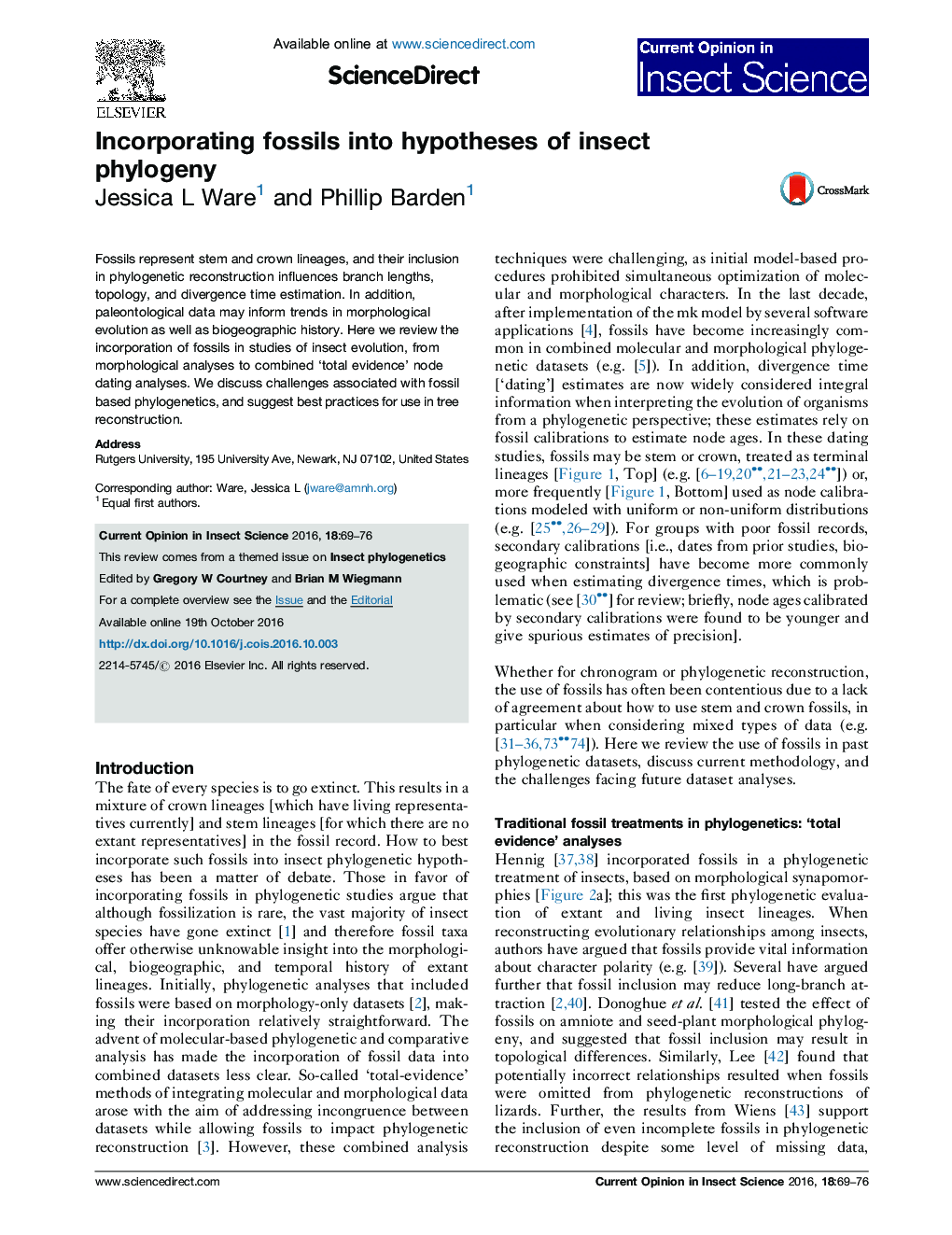| کد مقاله | کد نشریه | سال انتشار | مقاله انگلیسی | نسخه تمام متن |
|---|---|---|---|---|
| 6373987 | 1624372 | 2016 | 8 صفحه PDF | دانلود رایگان |
- Fossils are most frequently utilized to calibrate nodes in divergence estimation.
- Combined analyses including fossils may improve phylogenetic reconstruction, despite missing data.
- Paleontological data may improve biogeographic and broad evolutionary hypotheses.
Fossils represent stem and crown lineages, and their inclusion in phylogenetic reconstruction influences branch lengths, topology, and divergence time estimation. In addition, paleontological data may inform trends in morphological evolution as well as biogeographic history. Here we review the incorporation of fossils in studies of insect evolution, from morphological analyses to combined 'total evidence' node dating analyses. We discuss challenges associated with fossil based phylogenetics, and suggest best practices for use in tree reconstruction.
Journal: Current Opinion in Insect Science - Volume 18, December 2016, Pages 69-76
